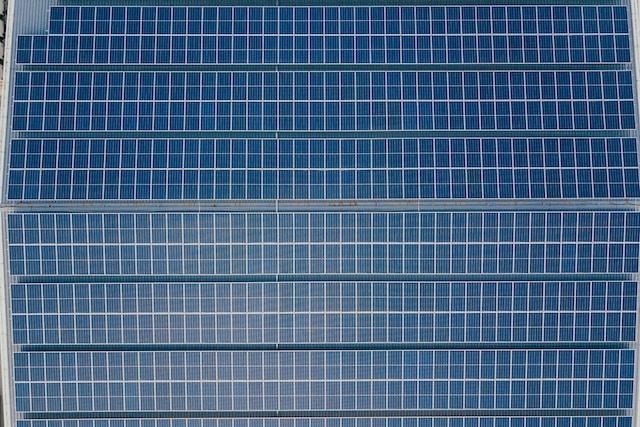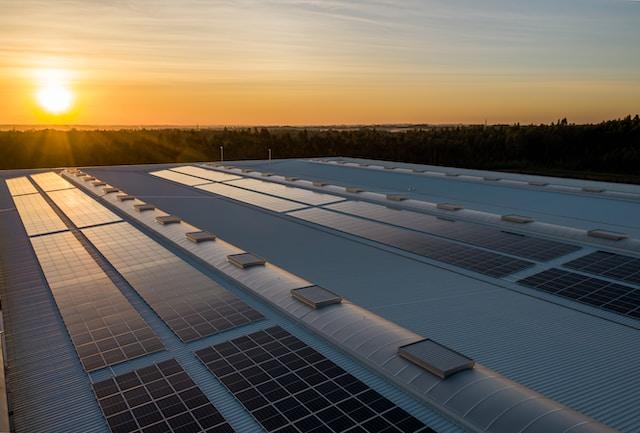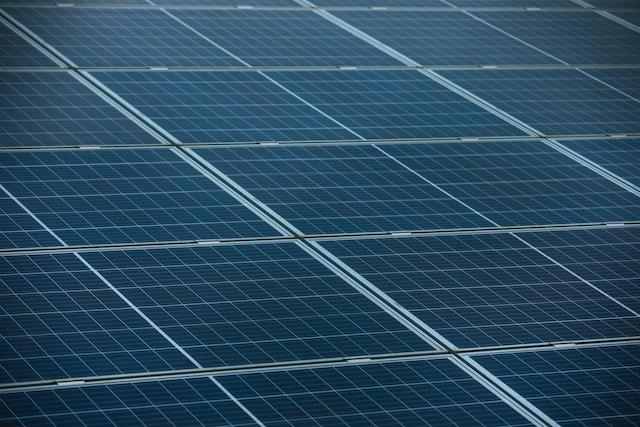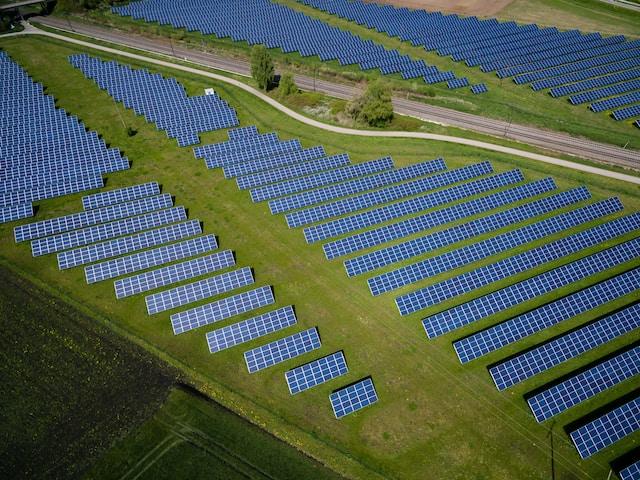
Unraveling the Efficiency of Thin-Film Solar Panels: A Comprehensive Guide
Introduction
Solar energy, an abundant and renewable source of power, is gaining prominence in our quest for sustainable living. Harnessing this energy involves various types of solar panels, each with unique characteristics and efficiencies. One such type gaining traction is the thin-film solar panel. Lightweight and flexible, thin-film solar panels stand apart from their traditional counterparts, Monocrystalline and Polycrystalline panels, offering unique advantages. However, when it comes to solar energy, efficiency is key. This article shines a spotlight on thin-film solar panels, delving into their efficiency, how they compare to other types, and what future advancements might mean for this innovative technology. Whether you're new to solar energy or looking to broaden your knowledge, understanding the efficiency of thin-film solar panels is an essential step in your solar journey.
What Are Thin-Film Solar Panels?
Thin-film solar panels, as their name implies, are photovoltaic panels characterized by thin, lightweight layers of photovoltaic material placed onto a substrate. These panels can be made from a variety of materials, including amorphous silicon (a-Si), cadmium telluride (CdTe), or copper indium gallium selenide (CIGS). The manufacturing process of thin-film solar panels differs significantly from traditional crystalline panels. Thin-film panels are produced by depositing several thin layers of photovoltaic material onto a substrate. This process allows for flexibility in panel design and can be more cost-effective, as it often uses less material than crystalline-based panels. Moreover, thin-film manufacturing is scalable and adaptable to a variety of formats, making it a versatile option in the solar industry. Key characteristics of thin-film solar panels include their lightweight and flexible nature, which allows for a wider range of applications, including integration into building materials and usage in locations where weight and space are critical factors. Furthermore, they perform well in low-light conditions and high temperatures compared to traditional panels. However, it's important to note that while thin-film panels offer these unique advantages, they typically have lower efficiency rates than their crystalline counterparts. Understanding these traits is essential for those considering the adoption of solar energy, as each panel type offers different benefits and trade-offs.
Understanding Solar Panel Efficiency
Solar panel efficiency is a crucial factor when considering solar energy. Simply put, it refers to how effectively a solar panel can convert sunlight into usable electricity. A higher efficiency means that more sunlight is converted into energy, leading to higher power output. Several factors can influence the efficiency of a solar panel. These include the type of photovoltaic material used, the design and construction of the panel, and the intensity and angle of sunlight the panel receives. External conditions such as temperature and shading can also impact efficiency. For instance, solar panels typically perform better in cooler conditions and when positioned to receive direct sunlight. Efficiency plays a pivotal role when choosing between different types of solar panels. While higher efficiency might seem like the clear choice, it's not the only consideration. For instance, while thin-film solar panels typically have lower efficiency than crystalline panels, they offer advantages in flexibility, weight, and performance in low-light or high-temperature conditions. Therefore, the optimal choice of solar panel type depends not only on efficiency but also on specific installation conditions, budget, and space constraints. A comprehensive understanding of solar panel efficiency, along with other factors, is thus critical in making an informed decision about solar energy adoption.
The Efficiency of Thin-Film Solar Panels
When discussing solar energy, the efficiency of thin-film solar panels is a key topic. Generally, thin-film panels have an efficiency range between 10-12%, though newer models can reach up to 15-20%. While these figures may appear low compared to Monocrystalline (15-20%) and Polycrystalline (15-18%) panels, it's crucial to delve beyond the numbers. Monocrystalline and Polycrystalline panels indeed lead in terms of peak efficiency, however, thin-film panels exhibit certain advantageous performance characteristics. For instance, they are less impacted by high temperatures and shading, maintaining a better performance under these conditions compared to their crystalline counterparts. Moreover, they perform well in diffuse light conditions, which makes them a viable option in regions with less sunny days. A real-life example that demonstrates the efficiency of thin-film solar panels is their use in large-scale utility projects. The Topaz Solar Farm in California, one of the world's largest solar farms, uses thin-film CdTe panels due to their lower cost and acceptable efficiency in large scale, unshaded, and high irradiance conditions. Another example is the integration of thin-film panels into building materials (Building-Integrated Photovoltaics or BIPV). The slight drop in efficiency is offset by the sheer coverage area when thin-film panels are incorporated into building surfaces such as windows or facades. The efficiency of a solar panel, while significant, is only one of many considerations. When weighing thin-film against other panel types, it's important to consider overall performance under intended conditions, budget constraints, and specific installation needs. In certain scenarios, thin-film panels, despite their lower peak efficiency, might be the most efficient choice overall.
Pros and Cons of Thin-Film Solar Panels
Thin-film solar panels come with a set of distinct advantages and potential drawbacks. Understanding these can help potential buyers make an informed decision. One of the main advantages of thin-film panels is their flexibility. Unlike traditional crystalline panels, thin-film panels can be applied to curved surfaces and integrated into building materials, opening up more possibilities for their use. They're also lightweight, making them easier to install and handle. Furthermore, they perform well in high temperatures and low-light conditions, making them suitable for various climates. On the downside, thin-film solar panels typically have a lower efficiency rate compared to Monocrystalline and Polycrystalline panels. This means that they usually require a larger surface area to generate the same amount of power. Another potential drawback is their shorter lifespan. While most solar panels come with a 25-year warranty, thin-film panels often have shorter warranties due to their shorter lifespan. When considering thin-film solar panels, potential buyers should assess their specific needs and constraints. The decision should take into account factors such as available space, budget, local climate, and installation needs. While thin-film panels may be a perfect fit for some, others might find that traditional crystalline panels better meet their needs. Understanding the pros and cons of thin-film solar panels is a vital step in this decision-making process.
The Future of Thin-Film Solar Panels
The future of thin-film solar panels is promising, with recent advancements and anticipated improvements potentially revolutionizing their efficiency and usage. Technological advancements are propelling thin-film panels forward. For instance, the advent of perovskite solar cells, a thin-film technology, has shown potential efficiencies of over 20%, rivaling traditional crystalline panels. Meanwhile, the use of CIGS (Copper Indium Gallium Selenide) in thin-film panels is proving to enhance performance under various light conditions. Looking ahead, further developments are expected. Researchers are exploring multi-junction thin-film panels, which use different materials to absorb various wavelengths of light, thereby boosting overall efficiency. Such advancements could lead to thin-film panels that are not only more efficient but also more adaptable to different environments. These developments in thin-film technology carry significant implications for the broader solar industry. The improved efficiency and flexibility of thin-film panels could make solar energy more accessible and versatile, expanding its applications. Moreover, these advancements could drive down costs, making solar energy an increasingly competitive alternative to traditional energy sources. As we look to a future where renewable energy plays a critical role, thin-film solar panels are set to be a key player. With ongoing improvements and a growing understanding of their advantages and applications, thin-film panels will continue to contribute significantly to the solar industry's evolution.
Conclusion
Understanding the efficiency of solar panels, including thin-film types, is crucial in the journey towards harnessing solar energy. While thin-film panels may offer lower efficiency than their crystalline counterparts, they provide unique advantages such as flexibility and performance in varied light conditions. These characteristics make them an excellent choice for specific installations. As we've highlighted, the solar industry is continually evolving, with thin-film technology seeing promising advancements. These developments are expected to boost efficiency and broaden the panels' applications. However, to make the right choice for your solar energy needs, we encourage you to delve further into the world of solar panels. The future of thin-film panels seems bright, contributing significantly to the renewable energy landscape, and it will be exciting to witness the transformative role they'll play in the years to come.
May 16, 2023
Share:
Fresh off the Press
Continue reading
Newsletter
Your journey towards a sustainable lifestyle starts here!
Join our newsletter for the latest on solar panels and clean energy breakthroughs.






